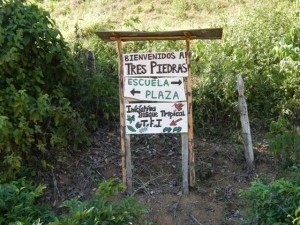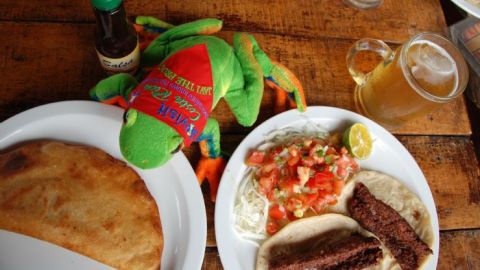Costa Rica News – When I was 15, I did a home-stay in a very tiny, very rural village in southwestern Costa Rica called Tres Piedras, and I fell in love. Not with anyone in particular, but with everything generally: the pace of life, the nature, the people, the food.
 I grew up in New York City and for 12 years attended an intense school where I didn’t wear the right clothes or live in the right neighborhood or have parents with the right jobs (mine were a writer and an artist). Costa Rica, with its laid-back “pura vida” approach to life, was a haven, a gift. In the years that followed, I found ways to return again and again. When I was 17, I applied for grants. During college, I baby-sat like a fiend and begged my parents for help so I could teach English in a one-room school house, climb trees, laze in the river and ride two hours on a horse to the nearest telephone, which only worked on every other Tuesday (if the sun was shining), so I could thank them for letting me go.
I grew up in New York City and for 12 years attended an intense school where I didn’t wear the right clothes or live in the right neighborhood or have parents with the right jobs (mine were a writer and an artist). Costa Rica, with its laid-back “pura vida” approach to life, was a haven, a gift. In the years that followed, I found ways to return again and again. When I was 17, I applied for grants. During college, I baby-sat like a fiend and begged my parents for help so I could teach English in a one-room school house, climb trees, laze in the river and ride two hours on a horse to the nearest telephone, which only worked on every other Tuesday (if the sun was shining), so I could thank them for letting me go.
On every visit I lived with the same family in their itsy bitsy house, which had no hot water, mirrors or glass in the windows. What it did have was an outhouse, cows that needed milking, mosquitoes that were never satiated, a horse that nose-nudged the front door open every morning and neighed until I gave him a carrot, and an endless stream of kids who braided my hair and sat on my lap and couldn’t understand why I didn’t eat pig. I tried to explain tofu, the subway, living on the 11th floor and Chinese-food delivery. I tried to explain having grown up without siblings. They offered to be mine.
Anelí was the matriarch of this house (and the only constant inhabitant—family members were always stopping by, moving in or moving out). She was a tiny powerhouse in an apron, always singing, always chasing away stray dogs and goats with a machete twice her size, and always telling me that I should marry a Costa Rican. But, she said, I’d need to learn to cook first. And eat pig.
In one way or another, Anelí was related to everyone in the town. She was considered the village chef and cooked for the school, the church and the weekend soccer games that flooded the town with visitors from neighboring villages. She spent all day making jams and cheeses, stewing batches of rich frijoles, killing chickens to put into her vats of tender arroz con pollo and frying long strips of plantains into crispy submission.
Most miraculous of all her creations were the empanadas. I would eat them until I had to lie down on my bed, begging the kids to please not sit on my stomach. Instead they sat everywhere else, counting my mosquito bites: One hundred and one. One hundred and two. I would promise myself I would never eat the empanadas again. But of course I would. I couldn’t resist the gooeyness of the cheese, the delicate crunch of the dough, the salty sweetness that I’d never  encountered in an empanada before, and haven’t since. Chalk it up to the freshness of Anelí’s ingredients, her confidence, her deft touch, but there was something else, too, that made them taste so good. Something a bit harder to identify.
encountered in an empanada before, and haven’t since. Chalk it up to the freshness of Anelí’s ingredients, her confidence, her deft touch, but there was something else, too, that made them taste so good. Something a bit harder to identify.
The last time I lived with Anelí was seven years ago. I spent three days covered in sweat, flour and grease splatter, attempting to master her empanada recipe. “For your husband,” she said a little too emphatically. (I was in college at that time, and had been with the man who is still my boyfriend for just a year.) I imitated everything she did: the amount of water she used in tortillas, how to not overwork them; the placement of the filling, how to not overwork it; the temperature, the cooking times, the handling. I left armed with five pages of notes, photos and diagrams, as well as Anelí’s tortilla press, which she gave me in a fit of hope. “For your husband,” she said.
Four thousand miles from Anelí, in my kitchen with a dishwasher, microwave and wireless router, I made her empanadas. They were dense, chewy and appallingly bland. Determined to keep the pura vida alive in New York, I tried using different cheeses, flours and oils, but over time my empanadas got worse and worse—reflecting, in some ways, the distance that was growing between Costa Rica and me. I loved college. I loved the Internet. I was trying to sort out a career in writing.
I went to Murray’s Cheese, asking for their advice on meltiness. When they had none to give, I was almost relieved. I wouldn’t have to try—and fail—again. Then, two years ago, I quit eating dairy. And I finally quit trying to make empanadas. I display Anelí’s tortilla press on a shelf.
They say that taste is in equal measure scent and flavor. But that doesn’t account for the more touchy-feely parts: poignancy and hope and a sense of place. Taste is, of course, susceptible to mood. A cheap red wine in a palazzo in Italy can knock your socks off as much as the $80 Chianti at Il Buco in downtown New York.
Someday I will return to Costa Rica, to dairy and to Anelí and her empanadas. And when she inquires about her beloved tortilla press, offering me a fourth and fifth empanada from the pot, and I tell her that I’ve failed her, she will ask me, not really asking, if I’ve married—and I’ll see her point. But I won’t linger on it. There will be too many empanadas to eat, to enjoy, then and there, only and ever.
By Jessica Soffer
—Ms. Soffer teaches fiction writing at Connecticut College. Her first book, “Tomorrow There Will be Apricots,” a novel, was published last month.

